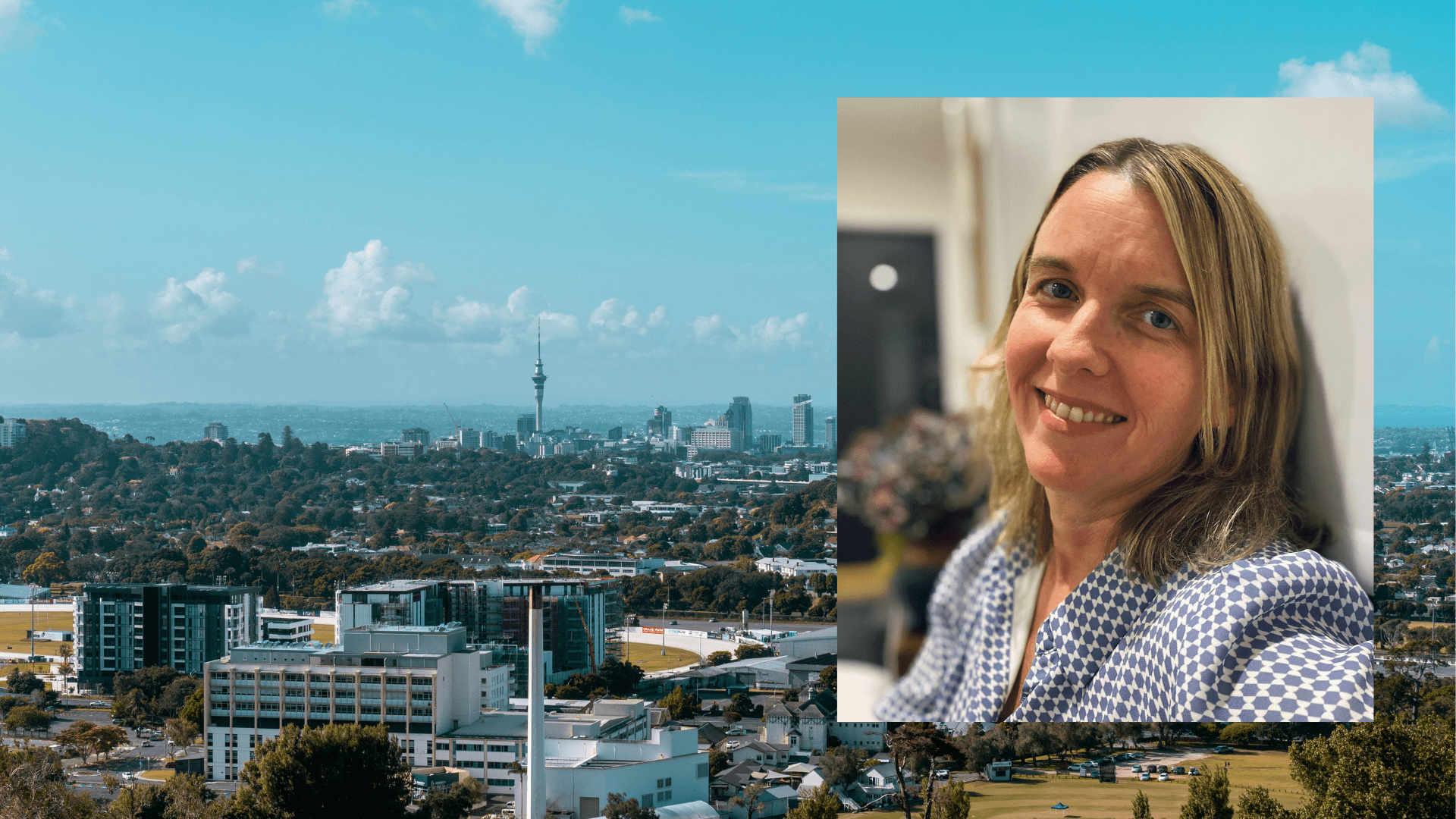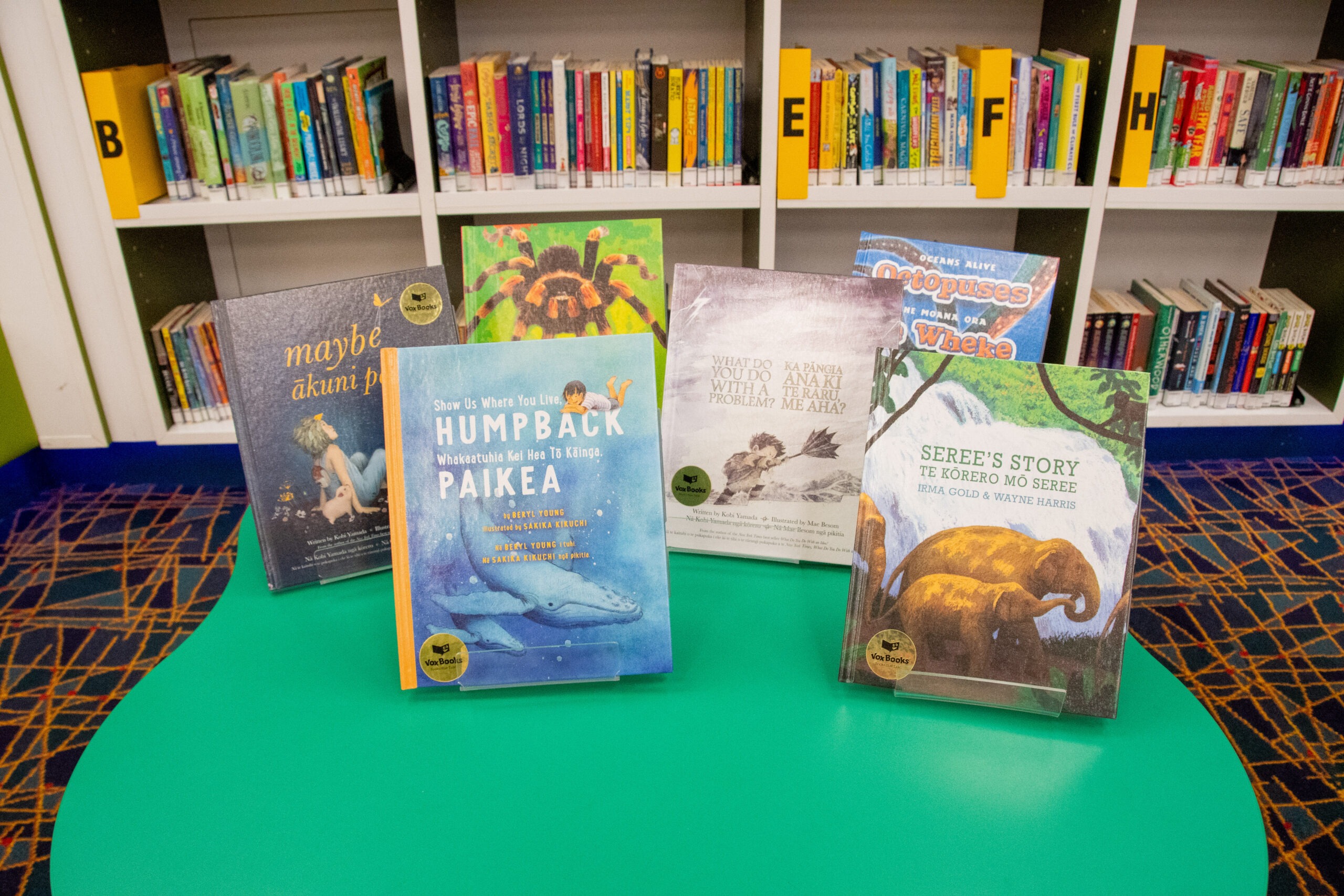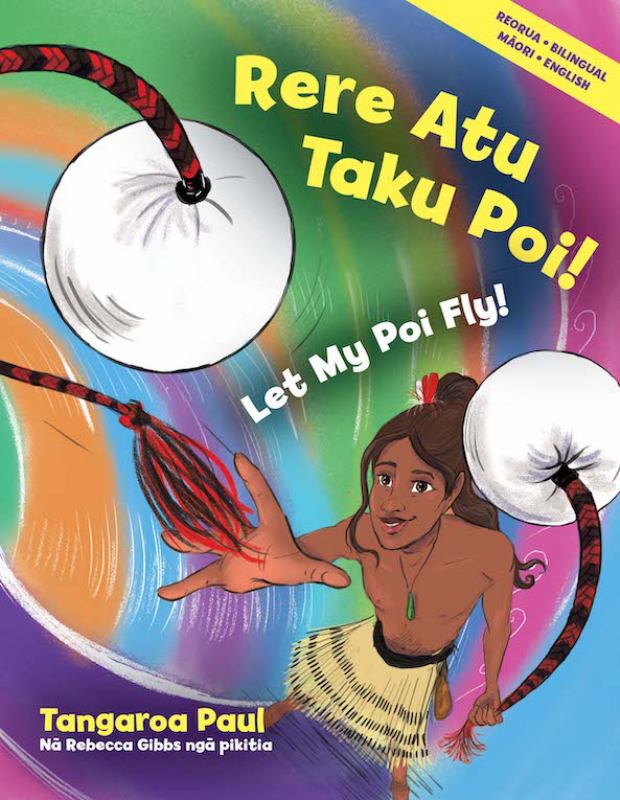Great libraries work to collect content that reflects the communities they serve. But what if not enough of that content exists? Claudia Palmer speaks with Kate Innes-Monsalve about the impact of Auckland Council Libraries’ publishing programme five years in and the unique reach librarians have into our communities.

Kate Innes-Monsalve is the Manager of Library Content Development at Auckland Council Libraries. She’s the type of person I’m willing to bet readers of The Sapling would get along with: she’s big on young people reading for pleasure; how it can shape academic outcomes but especially how it can create good, empathetic people. Kate oversees the collections of over fifty six Auckland Council libraries and their online offerings. While libraries may be synonymous with books, her team is not just sourcing books but music, film and videos, audiobooks, e-books, jigsaw puzzles, digital resources, and material for historic databases. Libraries must evolve with the needs of their communities, and the people on the ground are often the best interface to ascertain exactly what those needs are.
‘We were getting feedback from librarians across the network that they were facing challenges finding material that reflected the culture, the learning needs and the experiences of all their diverse customers and communities,’ Kate explains. ‘At the same time, our purchasing teams were finding that same challenge. The material they really wanted to buy, particularly Māori and Pasifika material, and material about Auckland’s diversity, was just not available because not enough of it was being published.’
That’s where the idea for a publishing programme sprung from. When they reflected on the promises of their own collection development policy, especially in regards to reflecting Auckland’s diverse communities and a commitment to mātauranga Māori, Auckland Council Libraries felt the collection was not quite cutting it. So, they decided to do something about it. Rather than wait for the market to fill the gap, they stepped into the publishing arena to collaborate.
Rather than wait for the market to fill the gap, they stepped into the publishing arena to collaborate.
Alongside Kate, the publishing team is made up of a publishing lead and a publishing specialist, who have so far spearheaded the publication of over 15 books (including e-books) and more than 10 digital resources such as videos, podcasts and teaching resources. The publishing team keeps their approach deliberately open, to ensure the partnerships serve each project’s authenticity. The process typically begins with library staff approaching the publishing team with ideas. From there, they determine what partnerships might be needed. ‘It might be that we’ve got a really well formed story, but we need some assistance with the editing side, or with the distribution.’ Kate notes ‘Or it might be there’s an idea, but we need help finding the right author for that idea. There’s no one way that we do it.’
As they emerge into the world of publishing, a highlight for the Auckland Council Libraries publishing team was seeing one of their bilingual books shortlisted for the Best First Book at the New Zealand Book Awards for Children and Young Adults in 2024. Rere Atu Taku Poi! Let My Poi Fly! by Tangaroa Paul (Muriwhenua) and illustrated by Rebecca Gibbs was published in collaboration with Oratia Media. While it didn’t take home the award on the night, I must note it was awarded several medals in The Sapling’s ‘quirky little pretend-ceremony’ conducted by Kura Rutherford and her student librarians at Michael Park School. It’s moments like this, when books are recognised by the book sector, that bring home for Kate that their work is making an impact well beyond the walls of their libraries and Auckland city.
Their search for publishing partners has also led the team to look overseas. After witnessing the popularity of the read aloud VOX books available at the library, a staff member proposed bilingual English and Māori language editions would make great additions to their collection. VOX books are picture books with a fixed audio component attached to the inside cover. ‘It’s really engaging for children because they can press the buttons and it reads the story to them out loud.’ Kate explains. The books get charged up with a Vox charger by librarians, and then customers borrow them like any other book. ‘They’re really, really popular with customers. So, we knew how much kids would love them.’

The VOX book format was developed by US publisher Library Ideas in 2015. While the company had produced bilingual books before, they had never published in te reo Māori until Auckland Libraries approached them. ‘They were really keen. They jumped on the idea straight away.’ Kate lays out the process: ‘we selected six picture books from their existing catalogue, then we worked with them to identify a translator and worked on the translations to make sure they were translated in a nice way, to be engaging to children.’ The books were translated by Kanapu Rangitauira (Te Arawa, Ngāti Porou, Te Whakatōhea).Then one of their very own librarians, Raniera Kingi (Ngāpuhi), meticulously checked the translation work with an eye for language that was suitable for children. Voiced by actors Miriama McDowell (Ngāti Hine, Ngāpuhi) and Kimi Houltham (Ngāi Te Rangi, Te Arawa), there are now six Māori and English editions of VOX books available at Auckland Council Libraries and other libraries around the country. For families on a Māori language learning journey, it’s clear to see how these books could be game changers for parents who are learning alongside their children and may not be so confident at reading a second language out loud. But you may want to put in a request (which is a free service provided by Auckland Council Libraries) sooner rather than later because, as Kate says ‘we saw those VOX books getting checked out straight away, and they’re still being checked out all the time.’
A number of Auckland Council Libraries’ earlier projects were made possible through the New Zealand Libraries Partnership Programme, which was a COVID-19 recovery programme funded by government and managed by the National Library. Some projects have had a mix of funding sources, but much of the funding has come from Auckland Council Libraries’ own collections budget, with the published material made accessible to all Aucklanders. It made me wonder why other library publishing programmes are not so prevalent—is that the role of publisher is not culturally associated with libraries? Universities, on the other hand, have long had their own presses but rarely with a prominence in children’s literature. Apart from a few anthologies or heritage collections, it seems rare for a library to have a whole publishing arm. There are, however, a couple of examples from large libraries in the US. In 2016, New York Public Library (NYPL) announced a partnership with Macmillan Publishers to bring to light the library’s collections ‘as source material for five to eight books a year’. Then last year, the Los Angeles Public Library (LAPL) acquired Angel Press, a publishing house with a 30 year legacy of telling the stories of Los Angeles. As long-time partners who shared similar missions, LAPL’s acquisition of the press made a lot of sense. But still, according to John F Szabo, a librarian at LAPL, it may be the first time an independent publisher has become part of a public library in the US.

While Auckland Council Libraries remain grounded in the stories of their city, Kate keeps across what libraries like NYPL and LAPL are doing. ‘Like us, they hold large collections of heritage material—photographs, manuscripts, and all sorts of old and interesting things about their cities or their countries. So a number of those libraries focus on bringing that material to light, creating it in a different format and bringing people’s attention to it.’ So alongside growing the amount of Māori language and Pasifika titles the publishing programme also aims to stimulate an interest in their collections. ‘We have so many amazing treasures in our heritage collections. A lot of this material is digitised so customers can access it online, but it can require a trip to the library and a special request to see it. We’d love to bring more of that out and make it more accessible for people,’ says Kate.
It’s a profound love of libraries and everything they encompass that drives Kate everyday. ‘As a librarian, I really understand the essential role that libraries play in our lives, but particularly in shaping young people’s lives. Libraries are, I think, magical spaces. Kids can go to libraries and have fun, but they’re also a safe space. Children can explore and learn and escape.’ While she couldn’t let on too much about their upcoming projects, Kate did say ‘we’ve got a couple of really exciting projects already underway for kids. One of them in particular will help to highlight that magic of libraries.’ Where the publishing programme will go next is in some ways unknown, due to the responsive and collaborative nature of it, and that’s what keeps it interesting and exciting for the Auckland Libraries publishing team.
When asked whether she’d like to see other public libraries around the country take up a similar publishing programme, Kate had enthusiasm for the idea. ‘I think librarians do have a unique kind of reach into their communities. So, they may see the need in a different way than what your mainstream publishers would. I say, go for it.’

Rere Atu Taku Poi! Let My Poi Fly!
By Tangaroa Paul
Illustrated by Rebecca Gibbs
Auckland Council Libraries and Oratia Books

Claudia Palmer
Claudia Palmer (Te Rarawa, Te Aupōuri) has a background in campaigning and marketing. After completing the Whitireia Publishing course, she worked for Huia Publishers in Wellington promoting award-winning books and authors. It was during this time, she realised just how life changing great children’s books can be. She now lives in the wildlife capital of Aotearoa, Ōtepoti Dunedin, with her partner where she works as an advocate for nature and taonga species.



